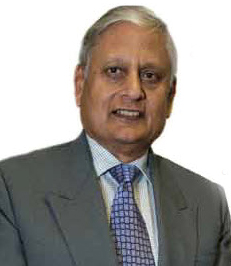 Indian High Commissioner and retired Admiral Nirmal Kumar Verma joined the Indian Navy in 1970 and became the 20th chief of the naval staff in 2009. He retired from service after commanding three ships, including an aircraft carrier. Over his career, he served on vessels in the former Soviet Union and studied at the Royal Naval Staff College in Greenwich (United Kingdom) and in Rhode Island. He completed post-graduate defence studies at a university in Chennai, India.
Indian High Commissioner and retired Admiral Nirmal Kumar Verma joined the Indian Navy in 1970 and became the 20th chief of the naval staff in 2009. He retired from service after commanding three ships, including an aircraft carrier. Over his career, he served on vessels in the former Soviet Union and studied at the Royal Naval Staff College in Greenwich (United Kingdom) and in Rhode Island. He completed post-graduate defence studies at a university in Chennai, India.
He sat down to speak with Diplomat editor Jennifer Campbell about his career, his priorities for his post and the challenges his country faces.
DM: The bulk of your career was spent with the Indian navy. Can you tell me about some of your experiences?
NKV: It was the finest career a person could have chosen. I was a little over 19 when I was commissioned to the Indian navy and it was a 42-year journey. I retired from office in August last year. It was very exciting. I had a variety of jobs and the camaraderie that you enjoy is something very special in the armed forces. That’s something which exists even between armed forces. There’s something special about the way we interact with each other.
In my younger years, I spent a lot of time at sea. The three commands I had were on frigates or destroyers and an aircraft carrier. When you get into the senior ranks, you get into policy-making and building the navy of the future, which brings its own set of challenges because you have to deal with government at the highest levels and see that your service interests are protected and progressed in the best way possible.
DM: How many years were you in policy-making?
NKV: From the time I became a flag officer until I retired as an admiral (14 years in total). One of the things I really enjoyed during my time with the navy was the opportunity I had to train with other navies, which included the Royal Navy. I did my staff college in the U.K. in 1983 and then 10 years later, when I was a captain, I attended the Naval Command Course at the United States’ naval war college. I made many friends, including some from the Royal Canadian Navy and we are still in touch. I touched base again after coming here. Earlier in my career, I had an opportunity to train in the former Soviet Union — I was part of a crew to acquire a ship. That was another experience. This was 1979. Our training was in the Russian language, so that’s a skill I acquired.
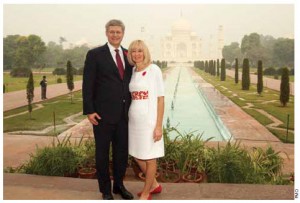
DM: What are your priorities for your posting in Canada?
NKV: I’d say that fortunately for me, prior to my assuming charge as high commissioner, we had a visit by Prime Minister Harper to India. I was part of the Indian delegation which participated in all the talks and the visit itself so I have an agenda which was defined by the two prime ministers. The areas for co-operation will be in energy, infrastructure, agriculture and agri-foods and education. The first two are particularly important because we will have the youngest population in the world in the next decade and we have 10 million young people joining the job market each year. So we have to create the jobs and to create jobs, you need to have certain prerequisites in place. So energy and infrastructure become extremely important. As far as energy is concerned, we are an energy-deficient country and Canada has an energy surplus. I see an absolute win-win if we can get investments right. It is possible because if you see the price Canada gets for exports to the U.S., it’s much less than the east-Asian economies are paying for gas. So if Indian companies have to invest here, in some part of the infrastructure so gas can be brought to India, and allowing for the costs, it should still be possible to do it.

On the energy file, we have set up a ministerial-level dialogue which will be headed by the deputy chairman of the planning commission. We are having a Canada-India oil conference in Calgary and I think it’s coming at a very opportune moment because just prior to that, we have all the major oil industry heads from India coming to Houston for an offshore technology conference. Since the conferences are back-to-back, I think there will be some interesting dialogues, and hopefully deals, which fall into place.
For infrastructure itself, we need something like a trillion dollars worth of investments in the next five years; it’s absolutely key. Half of it will be generated by the public sector through domestic schemes where Indian citizens invest and the other 50 percent has to come from the private sector. And it’s for this reason that our finance minister has been visiting the financial capitals of the world — he was just in Toronto — to speak to potential investors and to assure them that the timing is right to invest now.

One of the largest infrastructure projects is the Mumbai-Delhi industrial corridor. It’s about 1,500 kilometres of space and this is where the jobs will get created. It’s not just having jobs available. The population has to be capable of doing those jobs.
Around every corner, there’s so much that can happen. There was a time in the 60s that we were living ship to mouth — food shipments came in because of a crisis of basic grains. Then India embarked on the grain revolution and now we’re a grain-surplus country.
On productivity, we’re doing well, but there are other things that can happen.
On energy, we have sufficient quantities of coal, but beyond that, there is a requirement for technology and ensuring we minimize pollution.
Clean energy itself is going to be something which our government is investing a lot on. India is one country which enjoys 300 days of sun and this is something which needs to be harnessed.
If you look at the insurance sector, there’s a tremendous scope for co-operation. One of [Canada’s] companies is Sun Life and they have been in India for some time. If you look at the number of advisers they have there, there are many times more than they have in Canada.
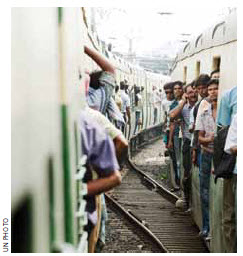
Take McCain potatoes. It took them some time to perfect the seed in India, but now that they have, it’s being grown. McDonald’s India sources all its fries from McCain India. And just by being present there, you see the business opportunities that come your way. Now they’re making aloo tikki [a fried potato dish from India] and it’s popular across the country. In India, I would say a larger percentage of people will go for this item over French fries. And now, because it’s produced there, the prices are lower.
Doing business in India, you need patience and perseverance. Also, the Indian market is very sensitive to price. If one can figure out what the Indian consumer wants, you have a huge market. For example, Canada’s DataWind has come out with a cheap internet device — about $30 or so. It doesn’t have huge computing power, but it gives you the basics. No one wants gold-plated items except for jewelry — my country is gold-hungry.
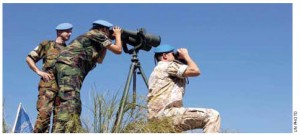
DM: India, it is often stated, is the largest democracy in the world. How does that distinction factor into its foreign policy?
NV: When India became independent, a lot of sceptics thought we wouldn’t stay together. If you look at the diversity that exists in my country, it’s immense. If you travel across the country, you’ll find different cultures, different religions, different languages, different cuisines. There’s so much diversity, but the one trait that’s kept us together is that we’ve been a vibrant democracy, where people have a voice. The population is very engaged. Today there is a trust across the country to deliver on a plan. Because we are a vibrant democracy, [the government’s] voice carries more weight because it’s got the backing of 1.2 billion people and, in fact, we have so many visits from presidents of countries near and far who want to see how our democracy works. In the last election, 700 million voted through the electronic voting machine. Our process takes a bit longer. To ensure that elections are conducted in a free and open manner, there’s security required, but the counting takes place in the quickest possible way. So when people have a voice, they will express their opinions about things they’re unhappy about and the system corrects itself.
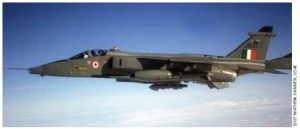
DM: India has one of the fastest-growing economies and therefore one of the fastest-growing middle classes. How does the country deal with that?
VN: Well, the middle class has aspirations as would be expected. It’s a huge consumer market that we’re talking about. Currently, it’s in the region of 280 million and in the next 15 years, it will be double that number. That’s one reason why when we talk about GDP, 60 percent of it is indigenous, products that are consumed within the country. We do export a fair amount, but we’re not dependent. There’s aspirations for goods, jobs, education, so that the skills are developed. And for that, we must grow at a rate of eight or nine percent [of GDP] per year. If we don’t grow at that rate, we won’t be in a position to create 10 million jobs per year and in fact, we were doing this at quite a clip for many years until the downturn came. The last couple of years have been bad because some of the reforms that have been contemplated could not be implemented. This year, we’ve just touched a little more than five percent. Our finance minister is absolutely confident that the way the reforms have been implemented, we will grow at six percent, then seven, then eight.
DM: There’s this great growing middle class, and well-entrenched democracy and plenty of good things. But there are also challenges — poverty, illiteracy, corruption, malnutrition. What do you see as the country’s biggest challenge?
VN: The biggest challenge is to ensure that the sections — those not in the middle class — are looked after. That’s why you find the thrust of the Indian government’s policy is on inclusive development. It’s not a GDP figure just to score marks on how the economy is doing. One hindrance to the reform process has been some of the subsidies we’ve been giving to the energy sector and other sectors as well. It was felt that the delivery mechanism wasn’t the best. We also have the largest project in the world, where each of 1.2 billion citizens will have a biometric card, which will also be linked to a bank account. The poorer sections will get direct transfers into their accounts so they have a certain level of living. In addition, if you look at agriculture, it is 17.5 percent of GDP, but it employs 50 percent of the population. So we know we have to improve the lot of the poor farmer. Agriculture has grown at 3.3 percent per year. In the next four years, the government will take it to four percent per year. There’s a rural employment guarantee scheme where we ensure that marginalized society have opportunities for employment. So we think this should make a huge difference.
We have universal health care, but in terms of the content, there’s much to be done.
We have the midday meal scheme so a child who goes to school gets a lunch with the required calories and it plays a huge role in the schools where the poorer people of society go. There was a time that they wouldn’t go to school, but now that there’s a nutritious lunch, it encourages enrolment tremendously. Every child is guaranteed free education to the age of 14.
In my lifetime, I’ve seen the ability to find people to do domestic work become more and more difficult, which is a sign of progress. Working conditions and salaries are increasing. They still do it, but at a higher cost.
In every strata of society, education is valued. People want to make sure their families get the best possible education. This is the area where they will scrounge, but make sure their children will get the best education. The same child who sees his parents’ sacrifices will look after them in old age.
DM: Can you talk about India’s role as a nuclear power?
VN: The world has actually accepted us as a responsible nuclear power with high standards with respect to nuclear non-proliferation. That is one part. The second is with respect to nuclear energy as a power source. This is an area that is important to us because of our power requirements. After a deal negotiated with the U.S., and India now being cleared for nuclear commerce, things have moved along.
We’ve progressed with respect to a nuclear supply agreement with Canada. We signed the appropriate documents in March of this year. Now we have to follow the steps to ensure it goes into commerce where nuclear shipments from Saskatchewan are transported to India. It’s a growth sector for us.
DM: How would you characterize India’s relationship with Pakistan at the moment?
VN: India has always wanted a peaceful periphery because that’s extremely important for growth. Every effort has been made to ensure that our neighbours, as well as India, grow. With Pakistan, there is an issue in Kashmir, where they have certain views. This has led to problems from time to time. We’ve had instances where we have militants coming across the border. We had the very unfortunate incident in Mumbai in 2008. There’s been quite a bit of proof given to Pakistan about those who may have been involved from within the country. And we’ve been expecting that steps would be taken to ensure that the people who were so identified are brought to justice. Unfortunately, that’s not happened and that is a stumbling block. Nonetheless, efforts are still on to see if there are areas where we can work together.


